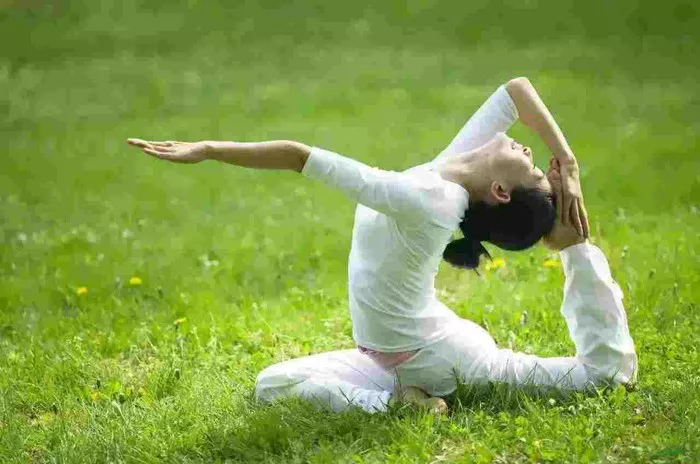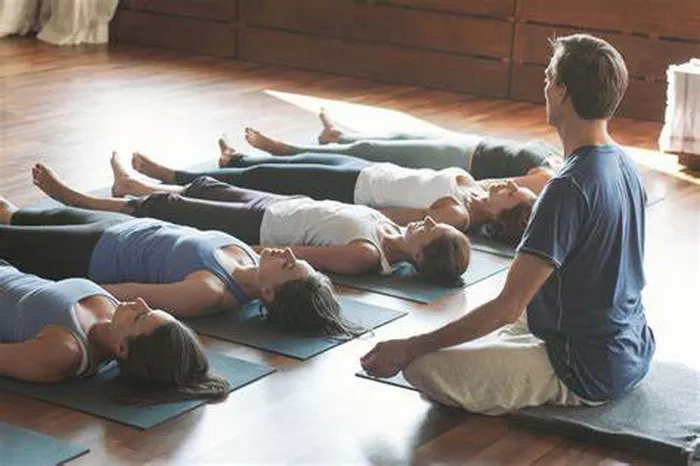he world of yoga is vast and inviting, with Hatha yoga standing as one of its most traditional and widely practiced forms. For those new to the realm of yoga, a common question looms: Is Hatha yoga hard for beginners? To answer this, it’s essential to delve into the various aspects of Hatha yoga, from its asana practice and breathing techniques to its philosophical underpinnings, and understand how they interact with the beginner’s journey.
The Asana Landscape: Navigating Hatha Yoga’s Physical Postures as a Beginner
A Structured Introduction to Asanas
Hatha yoga offers a structured approach to asana practice, which can be both a blessing and a challenge for beginners. The practice typically begins with foundational postures that focus on building strength, flexibility, and body awareness. For instance, Tadasana (Mountain Pose) serves as a starting point, teaching beginners how to align their bodies properly, engage their muscles, and find balance. This slow and methodical introduction allows beginners to gradually familiarize themselves with the basic movements and postures of yoga.
The Spectrum of Difficulty
However, Hatha yoga also includes a range of more advanced asanas, such as Sirsasana (Headstand) and Sarvangasana (Shoulderstand). While these postures are not typically introduced in the early stages of a beginner’s practice, they do represent the potential challenges that lie ahead. Beginners may find some of the intermediate postures, like Ardha Chandrasana (Half Moon Pose), initially difficult as they require a combination of balance, strength, and flexibility. But with consistent practice, the body adapts, and these postures become more achievable.
Pranayama: Mastering the Breath in Hatha Yoga
The Basics of Breath Control
Pranayama, or breath control, is a fundamental aspect of Hatha yoga. For beginners, learning the basic pranayama techniques can be both accessible and beneficial. Diaphragmatic breathing, for example, is a simple yet effective technique that involves taking deep breaths, expanding the abdomen as air enters the lungs. This type of breathing helps to relax the body, increase oxygen intake, and calm the mind, making it an excellent starting point for those new to yoga.
Advancing with More Complex Techniques
As beginners progress, they may encounter more complex pranayama techniques, such as Ujjayi breath and Nadi Shodhana (Alternate Nostril Breathing). Ujjayi breath, which involves constricting the back of the throat slightly while inhaling and exhaling, can be a bit challenging to master initially as it requires coordination and focus. Nadi Shodhana, on the other hand, requires the use of the fingers to alternately block the nostrils while breathing, which can be confusing for beginners. However, with patience and practice, these techniques can be learned and integrated into the yoga practice to enhance its benefits.
The Pace of Practice: A Balanced Rhythm for Beginners
The Moderate Tempo of Hatha Yoga
One of the advantages of Hatha yoga for beginners is its relatively moderate pace. Unlike some more dynamic yoga styles, Hatha yoga classes typically progress at a slower, more measured speed. This allows beginners to fully experience each posture, understand the alignment cues, and focus on their breath. In a Hatha yoga class, there is ample time to hold each asana, which helps beginners to build strength and flexibility gradually.
Adapting to the Practice Flow
However, the slower pace also means that beginners need to be patient with themselves. It can take time to get used to the rhythm of the practice, especially if they are used to more fast-paced physical activities. Additionally, the focus on holding postures may initially feel challenging as the body adjusts to the new positions and demands. But as beginners become more familiar with the practice, they can better appreciate the benefits of this unhurried approach.
The Mental Aspect: Conquering the Inner Challenges
Cultivating Mindfulness and Focus
Hatha yoga not only challenges the body but also the mind. Beginners are often introduced to the concept of mindfulness, which involves being present in the moment and paying attention to their thoughts, feelings, and sensations during the practice. This can be a significant challenge, especially for those who are new to meditation or self-reflection. In Hatha yoga, focusing on the breath and the alignment of the postures requires concentration, and beginners may find their minds wandering initially.
Overcoming Mental Blocks
Moreover, the mental discipline required to stay committed to a regular Hatha yoga practice can be a hurdle for beginners. There may be days when motivation is low, or self-doubt creeps in. However, Hatha yoga provides tools and techniques, such as meditation and positive self-talk, to help beginners overcome these mental blocks. By gradually building mental strength and resilience through the practice, beginners can develop a more positive mindset towards their yoga journey.
The Philosophical Foundation: Understanding the Deeper Layers
Introduction to Yogic Philosophy
Hatha yoga is rooted in a rich philosophical tradition, which beginners are often exposed to in their practice. Concepts such as the yamas and niyamas (ethical guidelines and personal observances), and the regulation of prana (life force energy), form the foundation of Hatha yoga. Understanding these philosophical aspects can be a bit overwhelming for beginners at first, as they are often new and abstract concepts.
Integrating Philosophy into Practice
However, integrating these philosophical principles into the practice can enhance the overall experience of Hatha yoga. For example, the principle of non-violence (ahimsa) can be applied by being gentle with oneself during the practice, avoiding pushing the body too hard. As beginners start to understand and apply these philosophical ideas, they can develop a deeper connection to the practice and gain a more profound sense of its purpose.
Conclusion
In conclusion, while Hatha yoga does present certain challenges for beginners, it is not an insurmountable path. The structured asana practice, though it includes a range of difficulties, offers a clear progression for beginners to follow. Pranayama techniques, while initially complex, can be mastered with practice. The moderate pace of Hatha yoga provides a supportive environment for beginners to learn and grow, although it requires patience. The mental and philosophical aspects of Hatha yoga, though challenging, offer valuable opportunities for self-discovery and personal development.
Related Topics




















